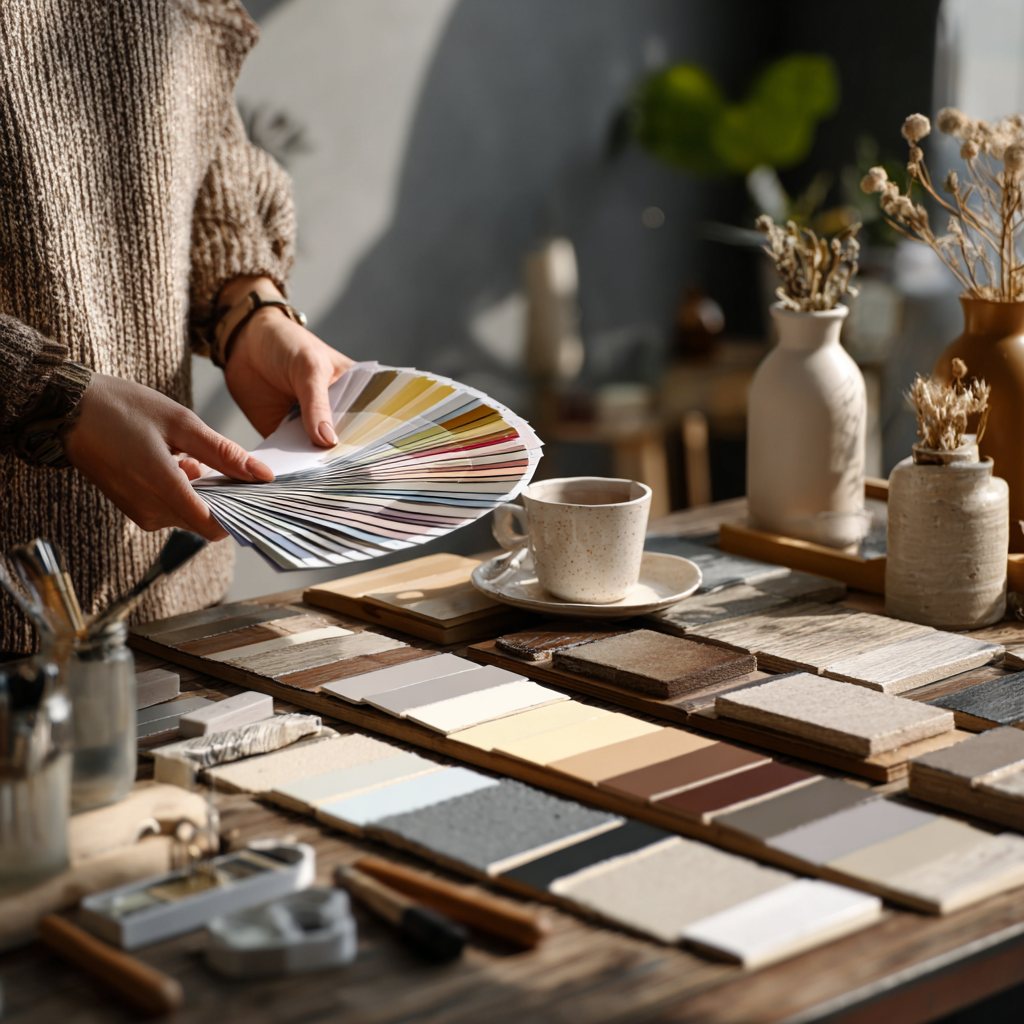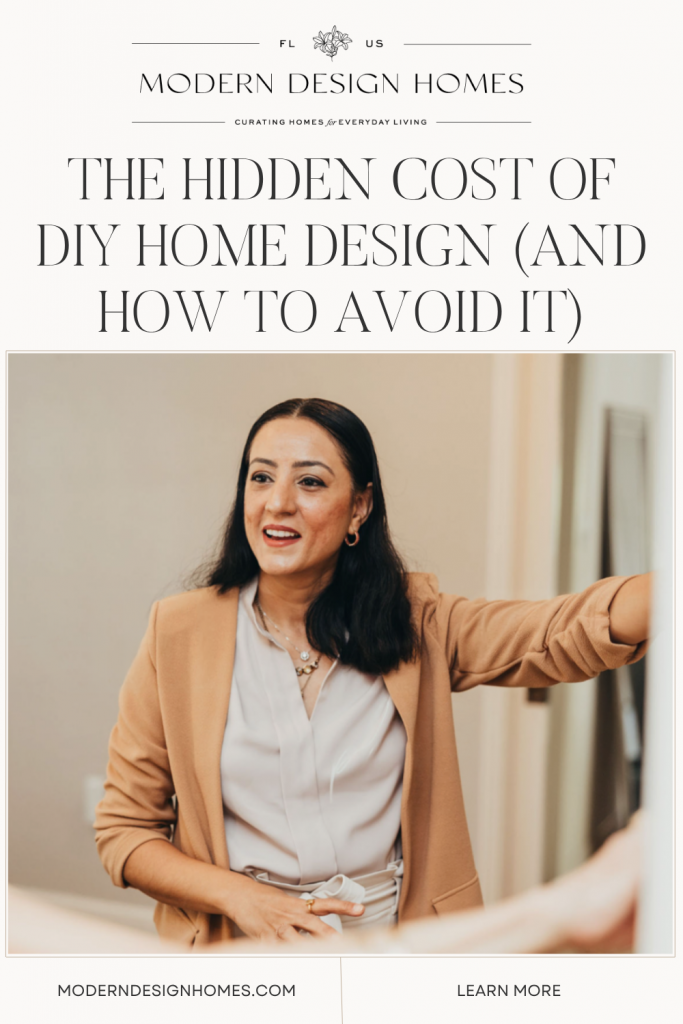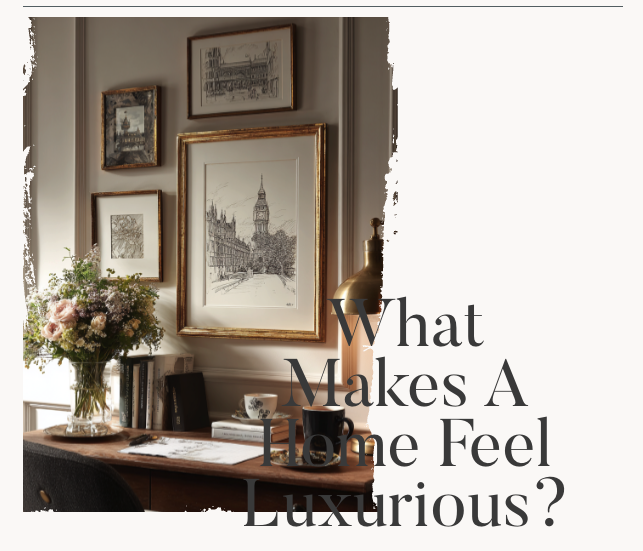
Ah, the thrill of a good DIY project. You’ve got your Pinterest boards ready, a latte in hand, and an ambitious plan to redesign your entire living room over the weekend.
Cut to Sunday night: you’re surrounded by paint samples, a half-assembled bookcase, and the sinking realization that “greige” doesn’t look the same in your house as it did on Instagram.
We’ve all been there. And while DIY can be fun for small projects, it can also cost you more time, money, and sanity than you might expect.
Let’s unpack the real cost of going solo — and how to avoid the common pitfalls before they blow your budget.

1. The Cost of Re-Doing Things (Twice)
That sofa looked stunning online… until it showed up looking like it belonged in a dollhouse. Sizing, scale, and color tones are tricky when you’re shopping without a plan.
Designer fix: Designers plan holistically — ensuring furniture, lighting, and finishes actually work together in your real-life space. A professional’s expertise prevents expensive mistakes before you hit “checkout.” And hey!! If you’re tired of guessing, my Design Consultation offers expert guidance and a solid plan to get it right the first time.
Read this Blog: The Luxury of Less: Why Quality Always Wins Over Quantity in Home Design

2. The Cost of Time
Endless scrolling for “the perfect rug” might not seem expensive, but your time absolutely is.
Designer fix: A designer curates and sources quickly, pulling from trusted vendors and experience. You save hours of trial and error — and get results faster (and better).
I really enjoyed this article on how to not make these silly mistakes! Check it out!
3. The Cost of Stress
DIYing your home design can be emotionally draining. The second-guessing, the delivery delays, the returns — it’s a full-time job.
Designer fix: A professional designer doesn’t just create a pretty home — they manage the chaos. From coordinating vendors to handle logistics, the goal is to make the process feel effortless for you.
4. The Cost of Missed Potential
You can have all the right furniture, but without proper flow, lighting, or balance, your space might still feel “off.”
Designer fix: Designers understand proportion, color psychology, and how to make a space feel right — not just look right. It’s that intangible “designer touch” that makes a home sing.
DIY can be fun — but when it comes to designing your dream home, the real value lies in strategy, cohesion, and expertise. If you want to make the most of your investment, skip the second-guessing and start with a professional eye. My Design Consultation gives you a clear, actionable plan — no overwhelm required.